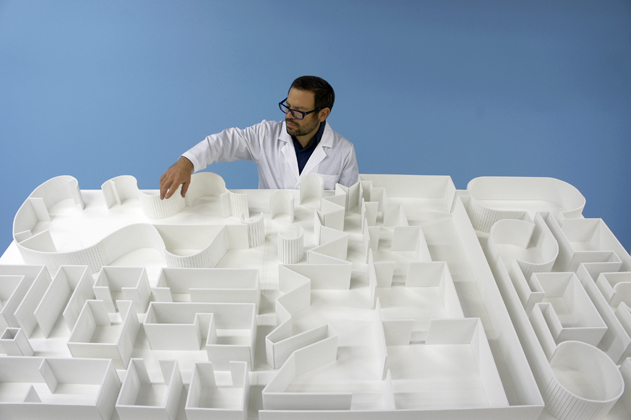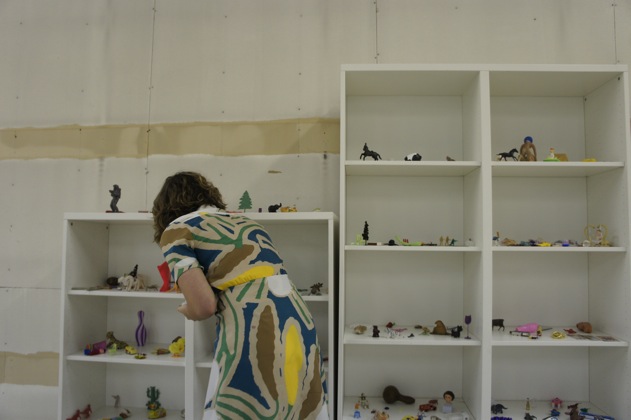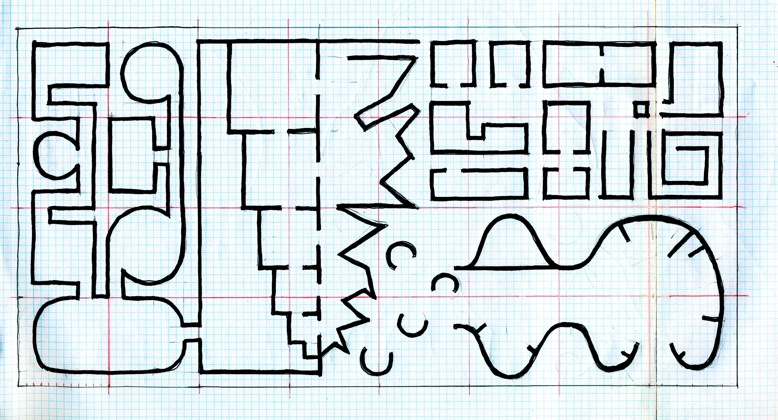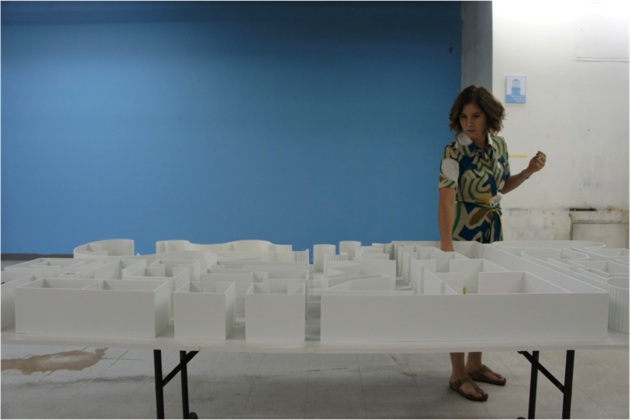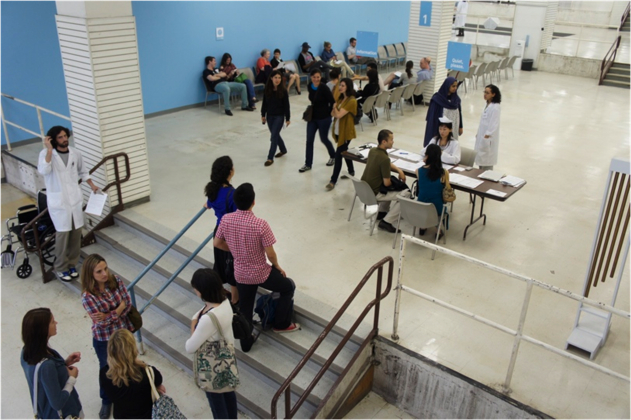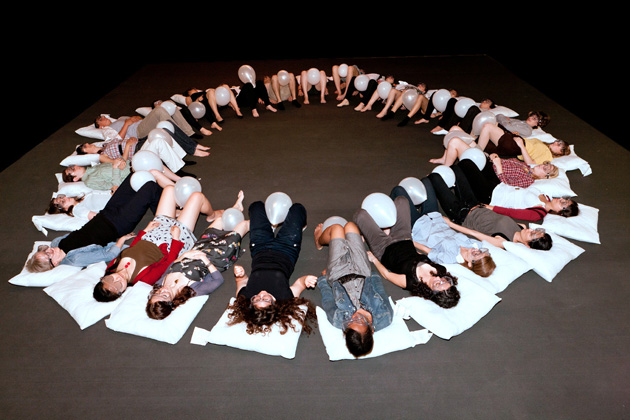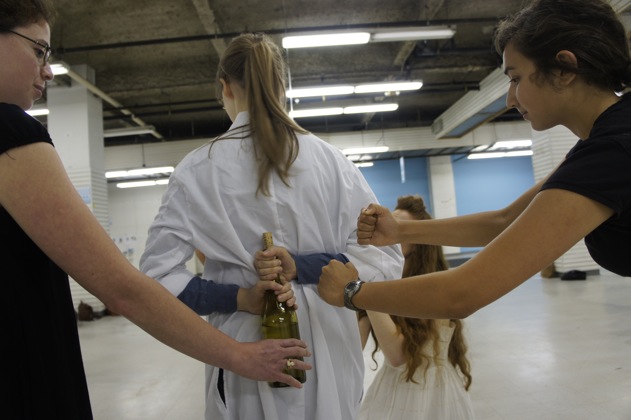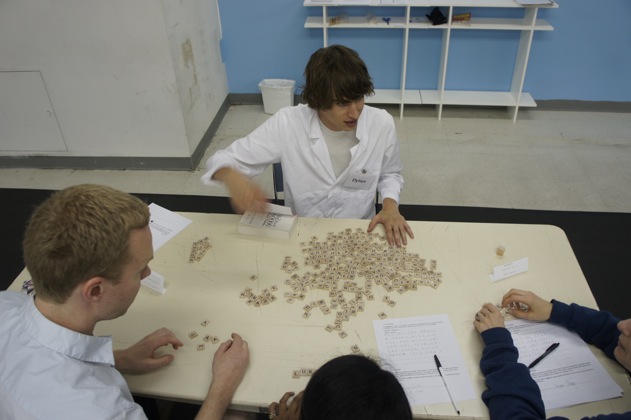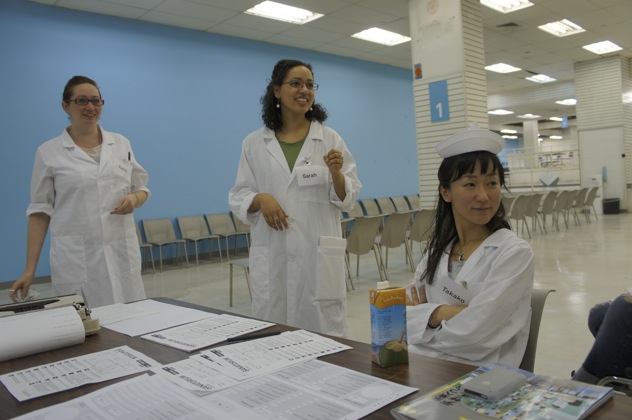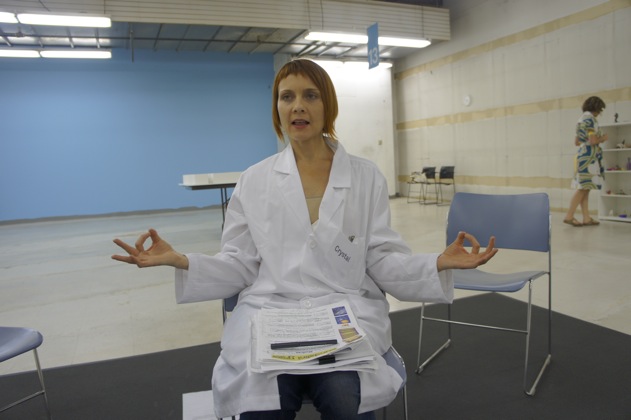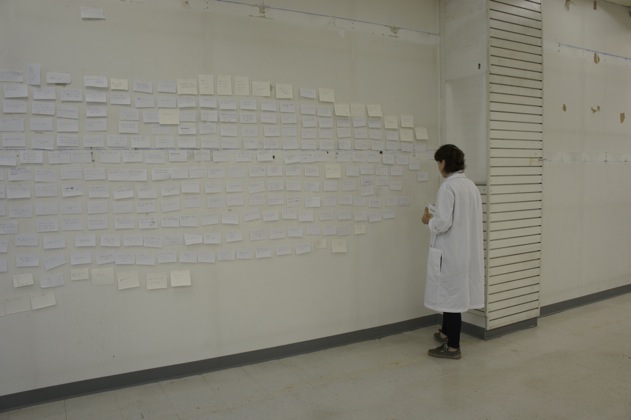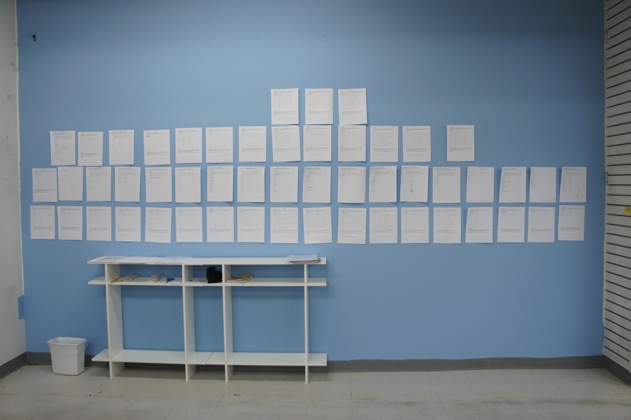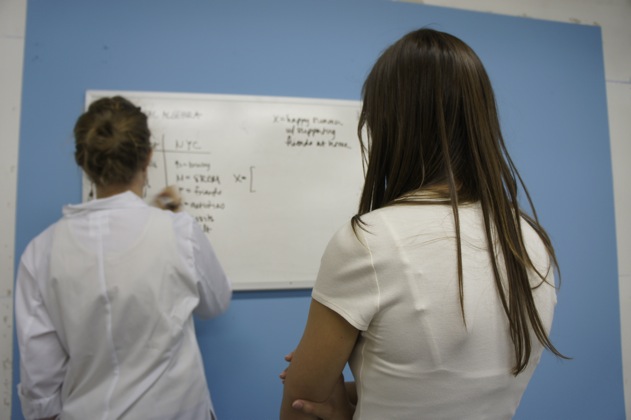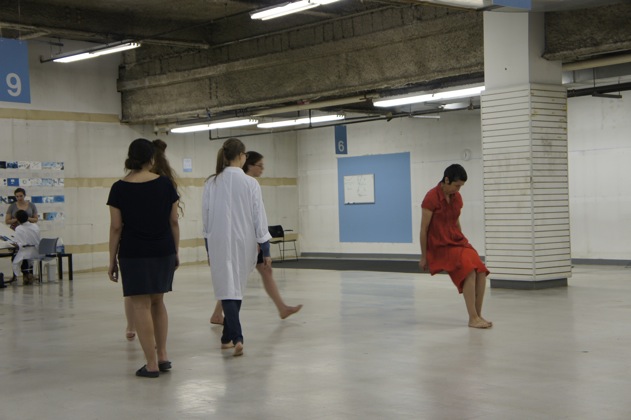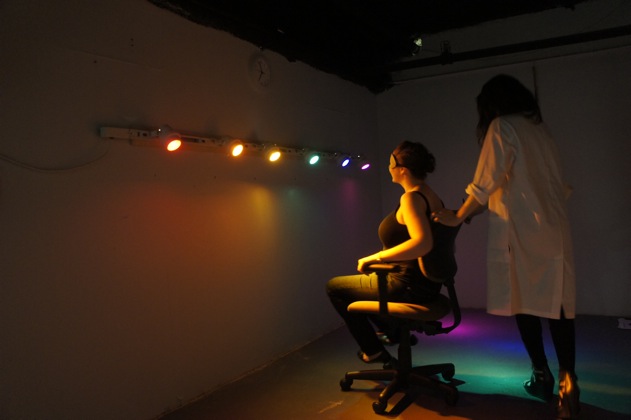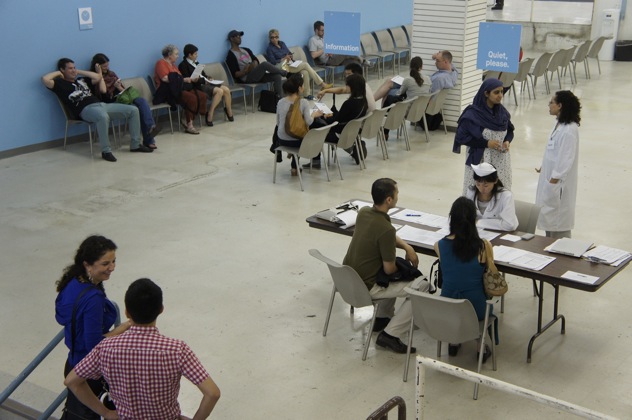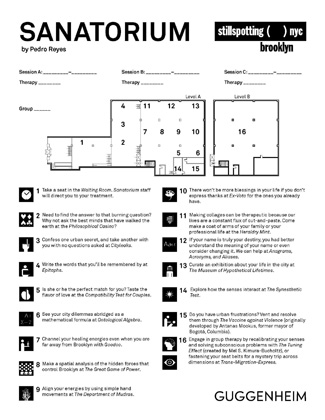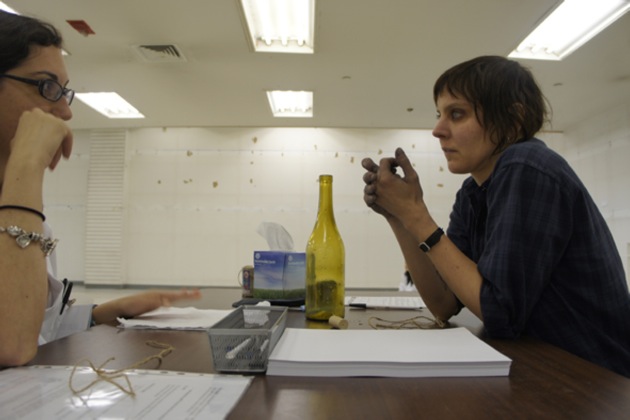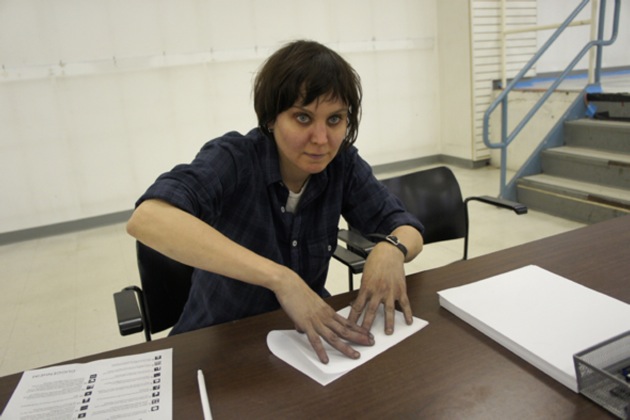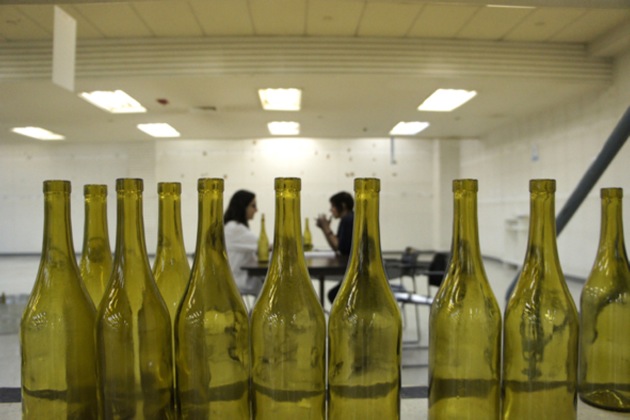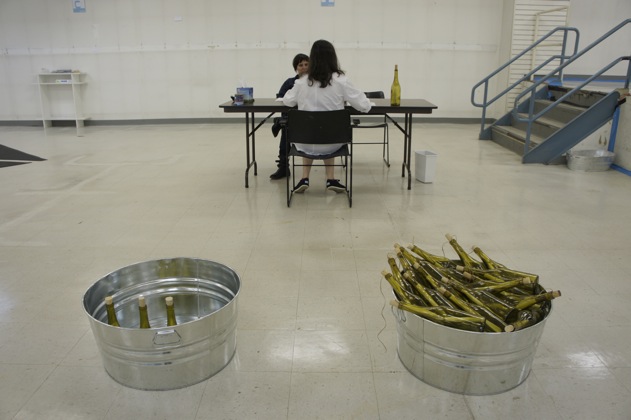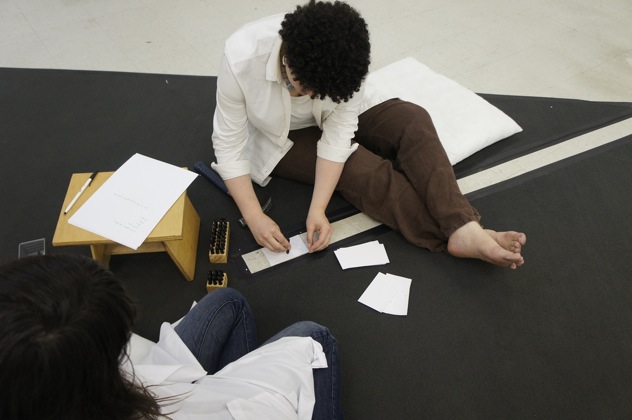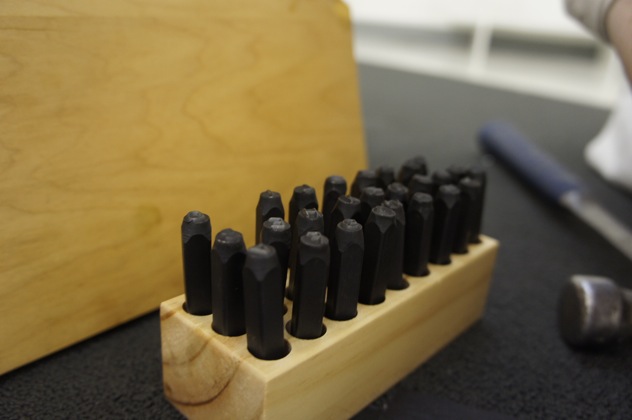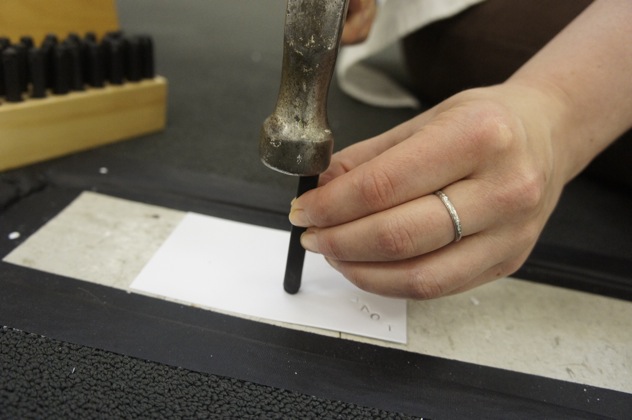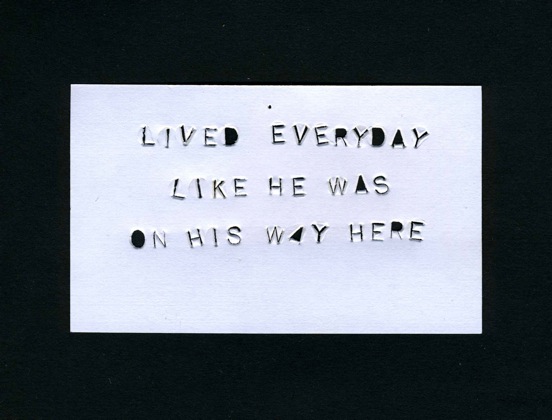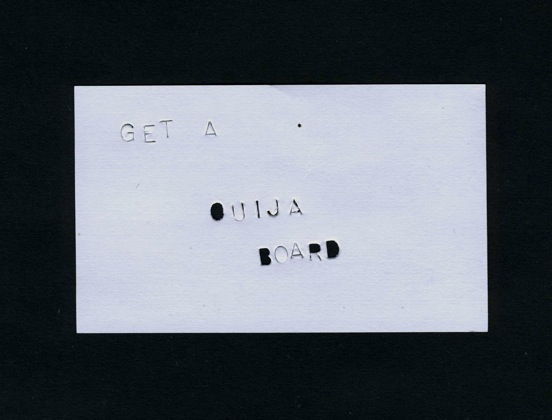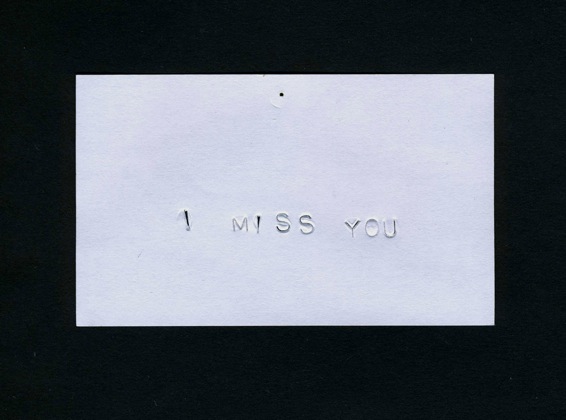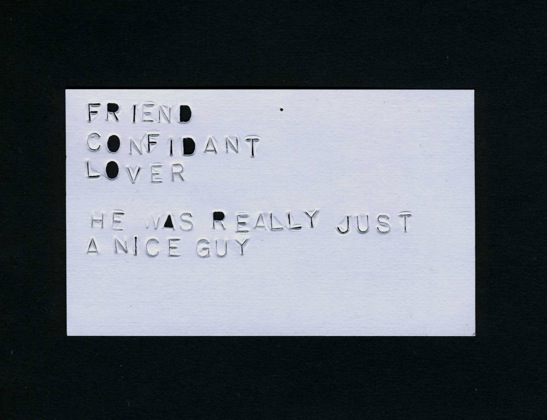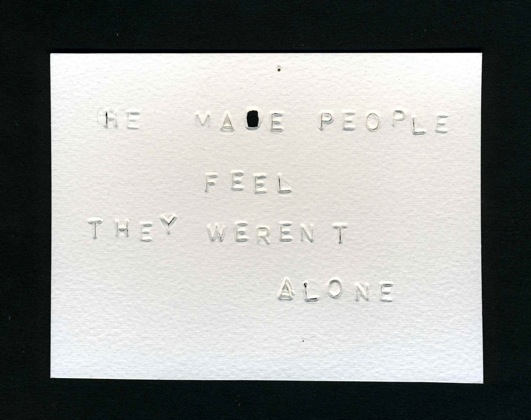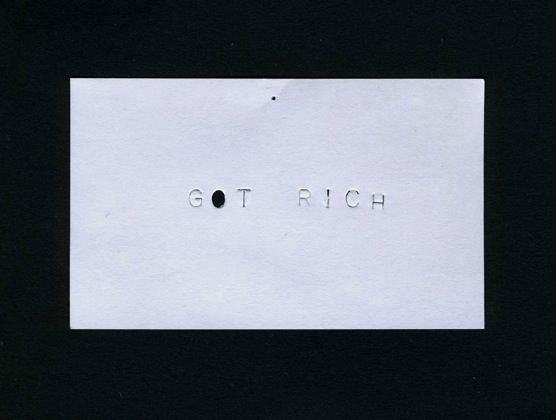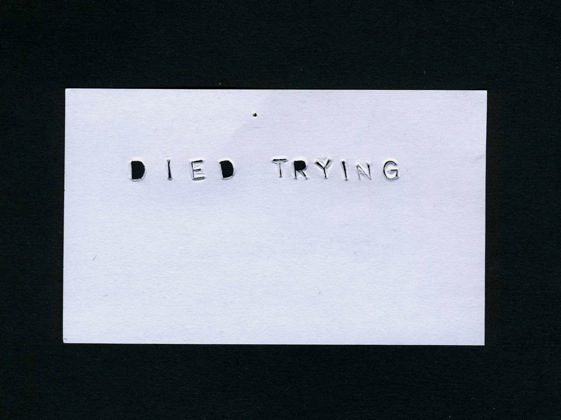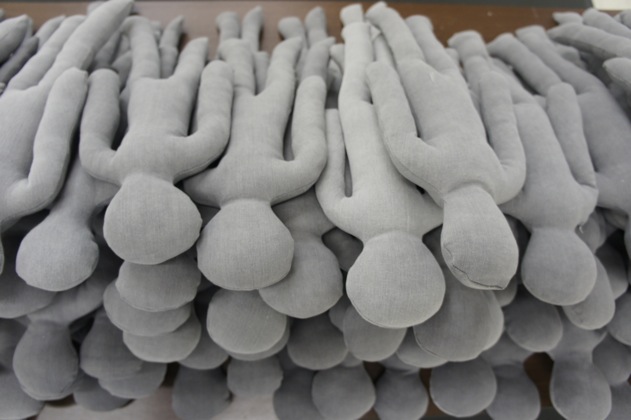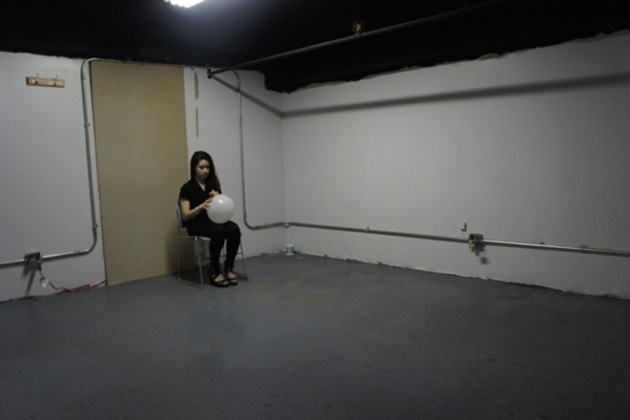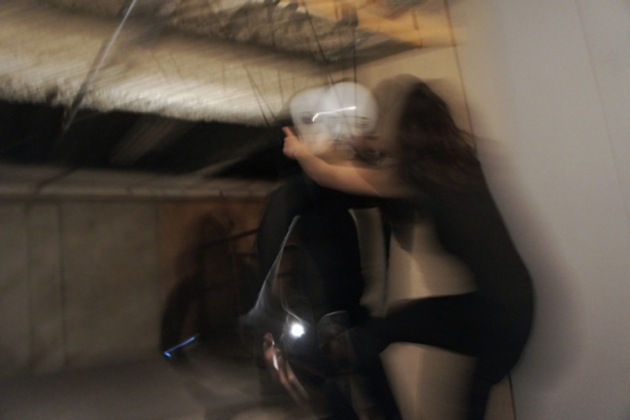| PEDRO REYES |
|
SANATORIUM. Instruction piece, therapy.
Stillspotting, Guggenheim Museum, NY
2011
|
||||||||||||||||||||||||||||||||||||||||||||||||||||||||||||||||||||||||||||||||||||||||||||||||||||||||||||||||||||||||||||||||||||||||||||||||||||||||||||||||||||||||||||||||||||||||||||||||||||||||||||||||||||||||||||
|
This activity is centered on a scale model of a hypothetical museum; you are about to see your entire life as an exhibition from the cradle to the grave, both a prospective and retrospective including your future and your past.
On the shelves you will find a large collection of small objects. They represent as completely as possible a cross-section of inanimate and animate beings which we encounter in the external world as well as in the inner imaginative world: trees, plants, stones, marbles, wild and domesticated animals, ordinary women and men pursuing various activities, soldiers, fairytale figures, religious figures from diverse cultural spheres, houses, fountains, bridges, ships, vehicles, etc.
Try to illustrate each moment of your life by selecting objects from the shelves. Arrange these small figures in the same way sculptures and paintings are arranged in a gallery. Your therapist plays the role of the museum's curator. If you wish, you can explain what you are doing or wait until the end. They can clarify how some galleries are supposed to be used; however, the rules are simple and you are the artist. Your vision is what counts. Key to the Galleries of the museum: 1) The Cradle 2) The Father 3) The Mother 4) Grandmother 5) Grandfather 6) Grandmother 7) Grandfather 8) Play space -shrinking 9) Education -growing 10) Youth 11) Workspaces -career 12) Personal Life 13) Unused potential 14) Death (exit) |
||||||||||||||||||||||||||||||||||||||||||||||||||||||||||||||||||||||||||||||||||||||||||||||||||||||||||||||||||||||||||||||||||||||||||||||||||||||||||||||||||||||||||||||||||||||||||||||||||||||||||||||||||||||||||||
|
Group Activity, instruction piece
Stillspotting, Guggenheim Museum, NY
2011
|
||||||||||||||||||||||||||||||||||||||||||||||||||||||||||||||||||||||||||||||||||||||||||||||||||||||||||||||||||||||||||||||||||||||||||||||||||||||||||||||||||||||||||||||||||||||||||||||||||||||||||||||||||||||||||||
|
SANATORIUM is a transient clinic which provides short, unexpected therapies. The only way to experience this project is to sign up as a patient.
SANATORIUM starts with an interview where you are diagnosed and then appointed to experience at least 3 of 16 available therapies.
SANATORIUM therapies are variations or mash ups of existing schools such as Gestalt psychology, theater warm-up exercises, fluxus events, conflict resolution techniques, trust-building games, corporate coaching, psychodrama, and hypnosis. SANATORIUM is a delivery system of placebos. In the same way as a Brechtian play, to be aware of the set up doesn't prevents it from doing the trick. For a skeptical mindset magic has to be deprived of its aura. SANATORIUM offers a secular space for psychological processes that can be found in religion or shamanism. When you sign in you sign a release form warning you that this is not real therapy nor real therapist. You decide to believe. Suspension of belief has to maintain, eventually you decide to believe, to tell yourself a story. SANATORIUM works with each individual's own narratives. SANATORIUM is a democratization of therapy, a 'psychological first aid'. The sessions are conducted by non-professionals. It taps into the excess capacity that we have to help others. MANIFESTO
|
||||||||||||||||||||||||||||||||||||||||||||||||||||||||||||||||||||||||||||||||||||||||||||||||||||||||||||||||||||||||||||||||||||||||||||||||||||||||||||||||||||||||||||||||||||||||||||||||||||||||||||||||||||||||||||
|
SANATORIUM. Instruction piece, therapy.
Guggenheim Stillspotting, NY
2011
|
||||||||||||||||||||||||||||||||||||||||||||||||||||||||||||||||||||||||||||||||||||||||||||||||||||||||||||||||||||||||||||||||||||||||||||||||||||||||||||||||||||||||||||||||||||||||||||||||||||||||||||||||||||||||||||
|
In this activity the therapist asks you to think of a secret. The therapist will cover his or her eyes while you write your confession on a piece of paper. It is very important that you omit personal names or details that could jeopardize your reputation or anyone else's. Once finished, roll the paper up and use a string to fasten it shut, leaving one end of the string about forty centimeters long. Place the roll inside one of the glass bottles keeping the long end of the string outside of the bottle. Lastly, place a cork in the bottle and your bottle into the tank of water.
In exchange for writing your secret, you are given the chance to read someone else's. Pick one bottle.
While the writing of the secret is always carried out in private, the reading of it can be done publicly. The cathartic action of sharing a secret may be considered a secular substitute for the ritual of confession. The reading of the secret may produce some guilty pleasure similar to gossip, however, 'we care about the sin, not the sinner.' In this activity, we realize that no one is normal. Everyone has something to hide, and we may find resonance with stories familiar to us and learn how others feel about situations similar to our own |
||||||||||||||||||||||||||||||||||||||||||||||||||||||||||||||||||||||||||||||||||||||||||||||||||||||||||||||||||||||||||||||||||||||||||||||||||||||||||||||||||||||||||||||||||||||||||||||||||||||||||||||||||||||||||||
|
SANATORIUM. Instruction piece, therapy.
Guggenheim Stillspotting
2011
|
||||||||||||||||||||||||||||||||||||||||||||||||||||||||||||||||||||||||||||||||||||||||||||||||||||||||||||||||||||||||||||||||||||||||||||||||||||||||||||||||||||||||||||||||||||||||||||||||||||||||||||||||||||||||||||
|
In this therapy participants are given the chance to write their own epitaph in either plain or poetic language.
Most people never get to know what epitaph will be written on their tombstones, although some - especially writers - leave instructions for what they want to be the summary of their life.
In this exercise you get to choose some words which will tell future cemetery goers something about you, and perhaps about the meaning of life.
INSTRUCTIONS: 1. Take a few minutes to compose the words for which you will be remembered and write a draft. 2. Once you have completed your draft, choose 2 cards for your epitaph and place them on top of each other. 3. Gently pick up the letters of the metal stamps and hammer your epitaph letter by letter. 4. Once you have completed your lettering, you may place your epitaph in the 'cemetery'. 5. Keep the second copy for yourself. |
||||||||||||||||||||||||||||||||||||||||||||||||||||||||||||||||||||||||||||||||||||||||||||||||||||||||||||||||||||||||||||||||||||||||||||||||||||||||||||||||||||||||||||||||||||||||||||||||||||||||||||||||||||||||||||
|
Instruction piece, therapy
Stillspotting, Guggenheim Museum, NY The Ashraya Inititative, India
2011
|
||||||||||||||||||||||||||||||||||||||||||||||||||||||||||||||||||||||||||||||||||||||||||||||||||||||||||||||||||||||||||||||||||||||||||||||||||||||||||||||||||||||||||||||||||||||||||||||||||||||||||||||||||||||||||||
|
The voodoo doll, in popular imagery, is a magical surrogate for an intended target of sorcery. This therapy is a positive iteration of the voodoo doll, thus called 'Goodoo.' Here we take a generic cloth doll and personalize it using diverse materials.
|
||||||||||||||||||||||||||||||||||||||||||||||||||||||||||||||||||||||||||||||||||||||||||||||||||||||||||||||||||||||||||||||||||||||||||||||||||||||||||||||||||||||||||||||||||||||||||||||||||||||||||||||||||||||||||||
|
SANATORIUM. Instruction piece, Therapy.
Stillspotting, Guggenheim Museum, NY
2011
|
||||||||||||||||||||||||||||||||||||||||||||||||||||||||||||||||||||||||||||||||||||||||||||||||||||||||||||||||||||||||||||||||||||||||||||||||||||||||||||||||||||||||||||||||||||||||||||||||||||||||||||||||||||||||||||
|
This is a cathartic procedure. Your therapist will ask you to blow up a balloon and draw on it the face of the person who has hurt you the most in your life. After doing so, you will place the balloon on top of a punching bag shaped as a headless dummy. Your therapist will encourage you to hit the dummy, yell at it, tell this person why you hate them so much and how he or she did wrong. Get even with the dummy until the balloon bursts. At the end you will ingest a sugar pill, a placebo labeled as 'Vaccine Against Violence.'
To our minds a symbolic act has the equivalent power of a real act. Consequently, the symbolic destruction of a person may free us from the drive to act against that person in real life.
This therapy aims to make real acts of violence redundant, freeing the subject from long-standing hatred |
||||||||||||||||||||||||||||||||||||||||||||||||||||||||||||||||||||||||||||||||||||||||||||||||||||||||||||||||||||||||||||||||||||||||||||||||||||||||||||||||||||||||||||||||||||||||||||||||||||||||||||||||||||||||||||
